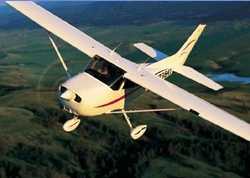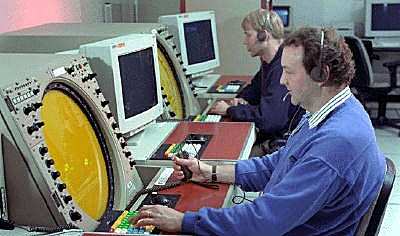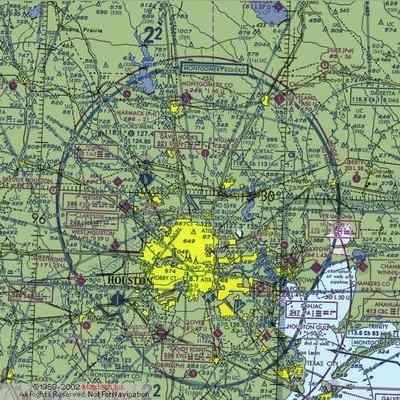 This week, the FAA released a
"fact sheet" aimed at curbing some of the backlash that the agency
and the airlines have received since introducing their proposal for
FAA reauthorization. However, this is just the latest round of
rhetoric that has been put out by the FAA and the commercial
airlines since the introduction of their proposal, which would
purposefully transfer billions of dollars of the airlines’
tax burden onto businesses and communities that rely on small
planes.
This week, the FAA released a
"fact sheet" aimed at curbing some of the backlash that the agency
and the airlines have received since introducing their proposal for
FAA reauthorization. However, this is just the latest round of
rhetoric that has been put out by the FAA and the commercial
airlines since the introduction of their proposal, which would
purposefully transfer billions of dollars of the airlines’
tax burden onto businesses and communities that rely on small
planes.
Here are the real facts:
FAA CLAIM: The FAA claims that general aviation drives 16% of
the costs of air traffic services, yet only contributes 3% of the
taxes.
REALITY: FAA’s own documents show that GA
currently contributes 8.6 percent of the taxes that flow into the
Airport and Airway Trust Fund.
The FAA has been using the same economist-accepted cost
allocation methodology since 1973 – that is, until now. In
the last properly-done cost allocation study in 1997, the FAA
reported that General Aviation was responsible for 6.7% of the cost
of air traffic control.
FAA CLAIM: The FAA’s fact sheet claims that the FAA
accounts for the fact that the major airlines drive more of the
costs of our air traffic control system.
REALITY: The reality is that the FAA’s
cost allocation study treats all turbine aircraft the same, whether
it is a turbo-prop that seats eight passengers or a 747 that seats
400 passengers.
In addition, the fact remains that the extensive cost of our air
traffic control system is driven by specifically by the
airlines’ hub and spoke system. When the airlines insist on
shoehorning the vast majority of air traffic into only 30 hub
airports, the FAA must provide increasingly complex and expensive
traffic control.

FAA CLAIM: The FAA claims that small planes will not be
decimated by the FAA/big airlines tax hike proposal.
REALITY: The FAA proposal would increase taxes
on GA by a whopping 334%, according to the Inspector General of the
Department of Transportation. In addition, if the proposal were not
devastating to GA, why would users say the following:
"User fees will wound, then slowly kill general aviation." -
Stephen Coonts, Charleston, WV
"User fees will tax an important American industry out of
existence." - Drew Coats, Houston, TX
"User fees are going to be like a cancer." - Michelle Jackson,
Raymond, MS
According to Phil Boyer, president of the Aircraft Owners and
Pilots Association, 9 out of 10 AOPA members have said that if the
tax on aviation gasoline is increased by 50-cents per gallon, they
will reduce or curtail their flying.
FAA CLAIM: The FAA claims that small planes will be exempt from
user fees.
REALITY: The Administration’s bill
clearly designates in black and white that user fee taxes may be
administered on any aircraft flying through Class B or any other
type of terminal airspace, including small planes:
"(c) EXCEPTIONS… (2) GENERAL AVIATION OPERATIONS. –
Except for fees established for operations in terminal airspace
[defined in (i)(3) as including Class B] for a large hub airport
under subsection (b)(2), no fees may be established under this
section for air traffic control and related services provided to
[general aviation paying a fuel tax]. The exception provided by
this paragraph shall cease to be effective if the rate of tax for
fuel under section 4081 (a)(2) is lower than 70.0 cents per
gallon…"

The FAA’s proposal purposefully includes exemption
language that provides them the ability to impose user fees on all
aircraft, including GA, at their own discretion.
FAA CLAIM: Administering the new user fee system will not
require a large new bureaucracy.
REALITY: The FAA may be confident that it can
collect fees with a minimum of bureaucracy, but the fact is that
all user fee based systems have required large, costly collection
administration. This is the case with service providers around the
world – why should we expect that the largest air traffic
control system in the world would be any different?
Further, the FAA’s own proposal calls for $1.36 billion to
be appropriated for services to collect user fees in the first 60
days!
FAA CLAIM: The FAA repeatedly claims that we need to
overhaul our entire funding mechanism for collecting revenue in
order to modernize our air traffic control system.
REALITY: The Inspector General of the
Department of Transportation, the U.S. Government Accountability
Office and the Congressional Budget Office, have all agreed that
modernization can be paid for under the current financing
system.
 FAA CLAIM: The proposal would
not remove Congressional oversight.
FAA CLAIM: The proposal would
not remove Congressional oversight.
REALITY: Regardless of FAA claims, their own
proposal clearly states that user fee rates would be set without
Congressional approval. Further, the only legal review of the user
fees system would not be Congressional, nor in fact judicial, but
administrative:
"(4) … the Administrator may periodically modify the
[user] fees established in this section either on the
Administrator’s own initiative, based on the requirements of
the agency or the users of the National Airspace System …
(3) Any person who is subject to fees established in this section
or section 45306 of this title, and who objects to the
establishment or amount of such fees may appeal that decision
exclusively to the Secretary of Transportation."
The Inspector General of the Department of Transportation and
the U.S. Government Accountability Office also agree that the
proposal weakens Congressional oversight.
FAA CLAIM: The FAA proposal would benefit consumers.
REALITY: The proposal is about reducing the tax
burden on airlines and shifting it on to small planes - this is a
clear tax break of 11% to the airlines. The U.S. Government
Accountability Office warned Congress in 2004 that airlines do not
in fact pass on tax savings to their passengers, so any improvement
would likely be to airline profitability, not passenger ticket
costs. Airline management and their lobbyists have even said
publicly that they are looking to improve their bottom line by
supporting this proposal.
FAA CLAIM: User fee taxes are an effective way to collect
revenue.
 REALITY: There
are numerous examples of unsuccessful user fee implementation
throughout the rest of the developed world, and it is clear that
user fees have damaged aviation.
REALITY: There
are numerous examples of unsuccessful user fee implementation
throughout the rest of the developed world, and it is clear that
user fees have damaged aviation.
In Australia, for example, general aviation has decreased 28%
since the implementation of user fees. Dick Smith, former Chairman
of Australia’s Civil Aviation Authority, and a former user
fee concept supporter, recently said, "Basically, user pays (as we
call it here) or the commercialization of CASA and Airservices, has
been a disaster for general aviation in Australia and I believe the
same will happen in the USA if it goes ahead."
FAA CLAIM: The Administration proposal would not destroy
service to small communities.
REALITY: If preservation of service to small
communities was a key goal in developing the FAA’s proposal,
why would their latest budget proposal decrease funding for the
Essential Air Service program to its Congressionally-mandated
minimum and abandon support of the Small Communities Air Service
program entirely?
 ANN's Daily Aero-Linx (04.16.24)
ANN's Daily Aero-Linx (04.16.24) Aero-News: Quote of the Day (04.16.24)
Aero-News: Quote of the Day (04.16.24) Airborne 04.10.24: SnF24!, A50 Heritage Reveal, HeliCycle!, Montaer MC-01
Airborne 04.10.24: SnF24!, A50 Heritage Reveal, HeliCycle!, Montaer MC-01 Airborne 04.12.24: SnF24!, G100UL Is Here, Holy Micro, Plane Tags
Airborne 04.12.24: SnF24!, G100UL Is Here, Holy Micro, Plane Tags Airborne-Flight Training 04.17.24: Feds Need Controllers, Spirit Delay, Redbird
Airborne-Flight Training 04.17.24: Feds Need Controllers, Spirit Delay, Redbird








